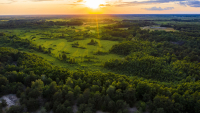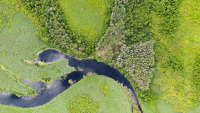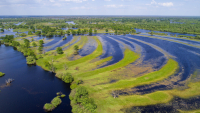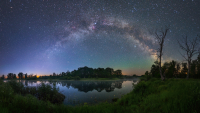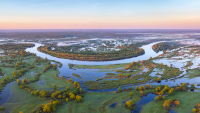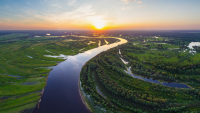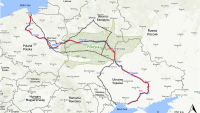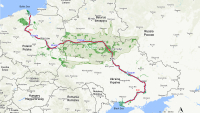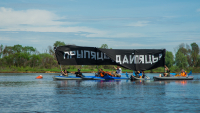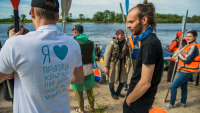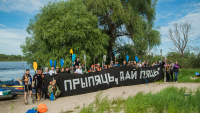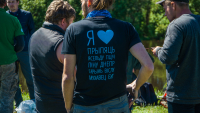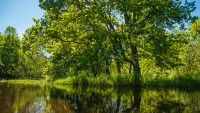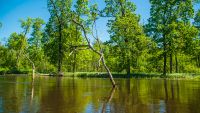Project – Active
This profile is actively maintainedHelen Byron, Frankfurt Zoological Society
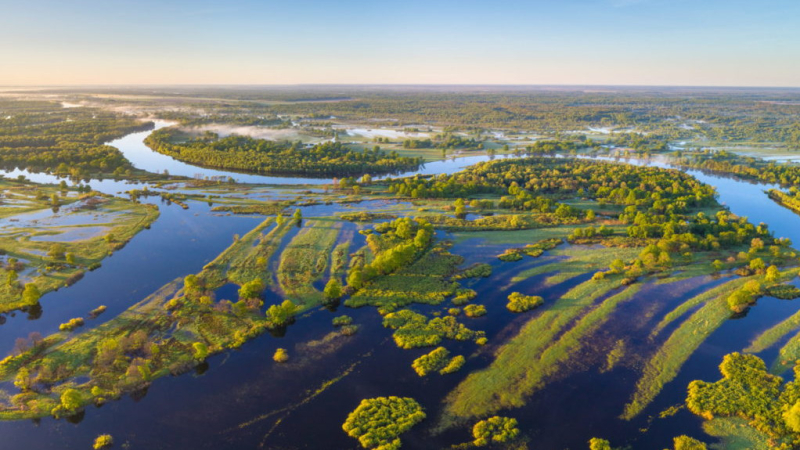
Project – Active
This profile is actively maintainedHelen Byron, Frankfurt Zoological Society
Why this profile?
The E40 Inland Waterway is expected to endanger valuable natural areas in Poland, Belarus and Ukraine. At least 193 internationally protected areas – with a combined size greater than Belgium – would be adversely impacted many severely. These include 66 Natura 2000 sites in Poland, 52 Emerald sites in Belarus and Ukraine, 16 Ramsar sites, 55 Important Bird and Biodiversity Areas (IBAs), two transboundary UNESCO Man and the Biosphere (MAB) sites, and two Baltic Sea (HELCOM) sites. Among impacted sites is the Chernobyl Radiation and Environmental Biosphere Reserve.
What must happen
The E40 Waterway is a large infrastructural project which will affect various rivers, regions, several protected areas, including national parks, Ramsar sites and Natura 2000 areas. Because of these adverse impacts banks should not invest in any section of the project. A part of the E40 Waterway route would go through the Chernobyl exclusion zone. The E40 Waterway may cause washing of radioactive silt away from the river bed and thereby affect Kiev's water reservoir and pose an increased radiation risk for millions of people downstream. Financially the E40 IWW can only be implemented if foreign investors provide the required financing for the project.
| Take Action! |
| Save Europe's Amazon! |
| Sectors | Construction |
| Location |
|
| Status |
Planning
Design
Agreement
Construction
Operation
Closure
Decommission
|
The E40 Inland Waterway (E40 IWW) is a transnational project aimed at establishing a 2,000 km Black-to-Baltic-Sea inland waterway through Poland, Belarus and Ukraine connecting the seaports of Gdansk and Kherson. It consists of the following rivers and canals: Vistula, Bug (new canal to be built), Mukhavets, Pina, Pripyat and Dnieper. The reconstruction plans of the E40 mention building a bypass canal in Poland, six or seven dams and locks in the Pripyat, as well as dredging on the entire route so that multitonnage river-sea vessels can follow the course of the rivers. The biggest part of the capital investments (around EUR 12 billion) is directed to the Polish section of the route Vistula—Brest. The Belarusian section has been preliminarily estimated at EUR 150 million.
Impact on human rights and communities
Research has shown that the economic benefits of the project for the people of Poland, Belarus and Ukraine are questionnable. The feasibility study contains a shallow risk analysis. The risks are analysed from the following viewpoint: if the economies of the three countries grow at a slower rate than expected, the impact of the project implementation may be worse than expected (Ales Gerasimenko). E40 waterway advocates also suggest to consider their project not in terms of direct payback but in terms of indirect impact on the economies of the three countries. However, as BUEE analysts estimate, there is no guarantee that modernisation of the waterway between Vistula and Dnieper will bring any long-term economic dividends to the region. Moreover, the impact of the project on Belarusian economy may be negative. A report by Langhout Ecologisch Advies reveals that the Polish section of the E40 waterway would cost taxpayers more than it would ever see in returns. The most likely route would end up losing taxpayers more than €6.5 billion. But because real construction costs frequently exceed estimations by a wide margin, it is likely that these losses would be far higher.
Impact on nature and environment
Polesia Polesia is Europe’s Amazon. This stunning region, which straddles the borders of Poland, Belarus, Ukraine, and Russia, is the continent’s greatest intact floodplain region. Despite ongoing threats from climate change, hunting, logging, and mining, huge areas of Polesia remain pristine. Natural and wild rivers lie at Polesia’s heart – the Bug in Poland, Dnieper in Ukraine, and the 750 km-long Pripyat, one of Europe’s most pristine rivers. The altitude across the remarkable 186,000 km2 region never varies by more than 150 meters. Meandering rivers, tributaries, and oxbows shape a labyrinth of wetlands, peatlands, forests, islands, swamps, bogs, marshes, and lakes that are home to some of the most biodiverse and culturally rich parts of Europe. The floodplains also mitigate floods, clean air, and are a major carbon store. Polesia is home to local communities, whose culture and lifestyle is adapted to the extraordinary environment.
Natura 2000 areas Along the Lower and Middle Vistula, the impacted Natura 2000 sites include both Bird Directive Special Protection Areas (SPA) and Habitat Directive Special Areas of Conservation, (SAC). The entire Bug river, from the River Narew to Terespol is part of the Natura 2000 network. In the case of constructing the E40 IWW between Vistula and Terespol based on the preferred third variant, an additional two Natura 2000 sites will be impacted.
The border region of Belarus, Poland, Russia and Ukraine called Polesia hosts one of Europe’s largest wilderness areas with an immense network of protected and unprotected natural areas. The size of this region is more than 18 million hectares and it has immense natural value, making it a cornerstone of a European network of protected areas. The region hosts the most valuable protected areas of Belarus including the Pripyatsky National Park, Belovezhskaya Pushcha National Park, Polesye State Radiation-Ecological Reserve, 16 national and 16 local reserves.
Polesia Pripyat, which is the main river of Polesia, is among the few undamaged, free flowing large rivers in Europe with high species and habitat richness. During migration periods, 1.5 million birds recharge in the floodplains of Pripyat, and over 90% of the total number of bird species of Belarus are recorded to inhabit the region. The E40 will impact the breeding sites of the vulnerable Aquatic Warbler (Acrocephalus paludicola). The total length of the E40 would affect sites holding 75% of the species’ population. Polesia’s wetland habitats include fen mires and raised bogs as well as floodplain areas with riparian forests, which are complemented by large areas of forest. Almost all key large mammals – among them Eurasian Lynx, European Bison, Brown Bear, Grey Wolf – are to be found here.
Dnieper The valley of the River Dnipro includes several designated Emerald Network sites, which are designated within the framework of the Berne Convention. These areas are not only important for halting biodiversity loss through hosting key species and habitats, but also offer important ecosystem services to the people living in the region.
Impacts on waterways To enable freight ships to navigate the waters would require straightening, deepening, damming, and dredging of rivers in some of the most environmentally sensitive parts of the region. The construction work could dry up rivers, directly impact 73 internationally protected areas, threaten species, and potentially disturb radioactive pollution in the Chernobyl exclusion zone. Air pollution from ships would afflict major cities on the route, while accidents and oil spills are a major risk. The E40 Waterway would undermine ecosystem services such as water retention, flood mitigation, clean air, and carbon storage.
Hydrological impacts Construction of the E40 Waterway would require dredging 6 million m³ of sediment from the Pripyat river in the first year alone – enough to fill more than 2,000 Olympic swimming pools to the brim. 3.5 million m³ would be dredged across the E40 each subsequent year. This would cause major and unpredictable hydrological changes. Water would flow out of the area faster than it could be replenished, expansive wetlands would dry up. It would cut directly through 73 protected areas of international importance, including Pripyatsky National Park. 120 more sites will have indirect impacts including Almany Mire – a huge complex of untouched mires and peatbogs. More than 2,000 km² of peatland could be affected in total. If drained this could result in annual emissions equal to those from 2 million cars. Habitats and stopover sites would be destroyed. Species such as the Aquatic Warbler would be at immediate risk of extinction.
Droughts, destroyed rivers and wildlife in Poland Construction of the E40 Waterway would involve a new channel in Poland, linking the Vistula river with the Poland-Belarus border. All proposed variations would lead to extreme consequences including droughts and the destruction of water resources used by citizens and farmers. A massive amount of water would be required, yet there are few viable water sources. Several key rivers would likely run dry or be severely altered. Water siphoned from rivers would require uphill pumping, which would be extremely expensive and may not be technically feasible. Damming the Vistula river and constructing the E40 waterway may result in the collapse or even extinction of key Polish populations of terns, gulls and other waders.
Other impacts
A part of the E40 Waterway route will pass through the territories affected by the 1986 Chernobyl disaster. These are the section of the River Pripyat flowing through the Polesye Radiation Reserve (Belarus), and the section of the Dnieper flowing through the Chernobyl Biosphere Reserve (Ukraine). The E40 Waterway may cause washing of radioactive silt away from the river bed and thereby affect Kiev's water reservoir and pose an increased radiation risk for millions of people downstream.
Banks involved in the E40 Waterway project so far are the European development banks the EBRD and the EIB.
Applicable norms and standards
Existing railroads (black) connecting Gdansk in Poland with Odessa in Ukraine as an alternative to the proposed E40 waterway (red), which would cut through the heart of the wetland wilderness of Polesia (dashed green line)
Route of the proposed E40 waterway (red) connecting the Black Sea and the Baltic, which would cut through the heart of the wetland wilderness of Polesia (dashed line) and impact internationally protected areas (dark green)
Video links
2025
2025-01-15 00:00:00 | Victory for Poland’s Vistula river: Siarzewo dam project canceled
Polish authorities have canceled the environmental consent for the Siarzewo dam project on the Vistula river meaning the project cannot go ahead. This decision is a big win for environmentalists and local communities, who have worked hard to protect the river’s natural ecosystem. The decision comes after almost seven years of waiting and debate (Save Polesia).
2022
2022-02-02 00:00:00 | New economic report indicates E40 waterway would operate at massive loss
A new economic analysis by the Netherlands-based consultancy Langhout Ecologisch Advies reveals that the planned E40 waterway would operate at a severe economic loss in the long-term, even under optimistic scenarios. The report outlines long-term losses in the billions of euros that would come from the development of a key part of the proposed waterway, running from Gdansk in Poland to Brest in Belarus. The construction of the roughly 700 kilometre-long section of the waterway is too expensive to be economically viable, the report concludes. The authors warn investors against putting capital into the project, as it would fail to deliver benefits to society as a whole. (Save Polesia)
2021
2021-10-29 00:00:00 | Siarzewo Dam – threat to Vistula river returns
In Poland, the threat of the Siarzewo Dam on the Vistula River returns following this week’s changes to the national Ministry of Climate and Environment and a court ruling that allows the project to continue under ‘immediate implementation’ status. In August, the Polish Minister of Climate and Environment Michał Kurtyka revoked the environmental consent for the construction project after many shortcomings in its impact assessments were highlighted by Polish NGOs. Now, the former Undersecretary of State within the Ministry of Maritime Economy and Inland Navigation, Anna Moskwa, is taking over the position to take a final decision on Siarzewo Dam, which is a key part of the E40 waterway. (Save Polesia)
2021-08-24 00:00:00 | Environmental consent for the Siarzewo Dam on the Vistula River revoked
The environmental consent for the construction of the Siarzewo Dam on the Vistula River has been revoked by the Polish Minister of Climate and Environment. The Siarzewo Dam would be a key part of the E40 waterway; it would alter one of Poland’s least impacted large rivers, with disastrous and irreversible impacts for people and nature. NGOs forming part of the Polish Save the Rivers Coalition have been pushing for several years for the Ministry to reassess the environmental go-ahead for the project (Save Polesia).
2020
2020-12-04 00:00:00 | E40 waterway recognised as top global biodiversity issue
A panel of 25 experts identified 15 top emerging issues of concern for global biodiversity conservation in 2021. The planned construction of the E40 waterway through Polesia is one of them. The annual review paper ‘A 2021 Horizon Scan of Emerging Global Biological Conservation Issues’ is published in Trends in Ecology & Evolution. From a long list of 97 topics, the panel of scientists and practitioners chose those emerging threats with the greatest likelihood to affect biodiversity conservation in the future. The planned 2.000 km navigable link between the Black and Baltic Seas could result in environmental impacts of global importance, the study suggests. The E40 waterway could dramatically change Polesia’s hydrology and ecology by altering rivers in Poland, Belarus and Ukraine. These changes could be devastating for the rich biodiversity that depends on Polesia. Millions of migratory birds that stop-off in the area each year would be impacted. It could also cause irreparable damage to important conservation areas, including 70 wildlife reserves. (Save Polesia).
2020-11-16 00:00:00 | No economic case for the E40 Waterway expert study reveals
The costs as well as the risks associated with the planned E40 waterway are unacceptably high – according to an expert economic assessment conducted by three leading business associations of Belarus. The study’s authors analysed the 2015 E40 waterway feasibility study by the Maritime Institute in Gdansk. Unacceptably high costs and risks are associated with the E40 waterway, yet the programme is moving forward (Save Polesia press release).
2020-09-02 00:00:00 | Hazardous dredging started in the Chernobyl Exclusion Zone
Ukraine takes first steps for the construction of the E40 inland waterway, breaching national law and potentially releasing nuclear waste that could expose millions of people living in Kyiv and between Chernobyl and the capital to increased radiation risk. In Ukraine, dredging of the Pripyat River as part of the E40 waterway construction has been launched at the eight sites planned for this year. This work is being carried out as part of the restoration of a bilateral waterway between Ukraine and Belarus, and as the first steps of the much larger E40 project. Four of the eight sites lie only a few kilometres from the remains of Chernobyl’s infamous Reactor 4, where the remnants of the world’s largest nuclear catastrophe lie hidden in the muddy riverbed. This work is proceeding on the basis of incomplete analysis of radiation levels and without any detailed studies having taken place as required by Ukrainian law (Save Polesia press release).
2020-06-09 00:00:00 | Urgent action needed to address drought conditions in Polesia
Experts have called for a far-reaching response to a devastating drought affecting large parts of Eastern Europe, including Polesia. In April, groundwater levels in Ukraine fell to their lowest levels since records began. Scientists have warned such events will be far more common in future due to climate change. They call for restoration of forests and wetland areas to mitigate the effects of droughts, and a halt to practices that intensify them – including the construction of the planned ‘E40’ waterway (Save Polesia News article).
2020-05-18 00:00:00 | Polish government initiates Feasibility study
Poland has initiated a feasibility study to inform route selection. Although the process is still underway, initial results show that the focus is on variants of a route that will have devastating environmental impacts. The government is also proceeding with planning for Siarzewo dam (treating it as a standalone project, although it will be part of the E40 Waterway project).
2020-04-23 00:00:00 | Planned E40 Waterway could pose increased radiation risk for millions of people
Governments of Belarus, Poland and Ukraine put human health at risk if they proceed with the plans to construct a 2,000 kilometres long waterway linking the Baltic and the Black Sea. This is the conclusion of an expert study on the radiation impacts of the E40 Waterway, released by the French non-governmental organization “Association pour le Contrôle de la Radioactivité dans l’Ouest” (Save Polesia press release).
2020-04-18 00:00:00 | Proposed river port in Belarus threatens local livelihoods and biodiversity
The government of Belarus plans to construct a river port in the Belarusian village Nijniye Zary as an infrastructure for the proposed E40 Waterway. This would destroy not only conservation areas of international importance, but also local livelihoods as their houses would be demolished (Save Polesia news article).
2020-03-12 00:00:00 | Ukrainian government forced to postpone dredging for E40 Waterway due to fish spawning
In early January, the Ukrainian Ministry of Infrastructure announced that the dredging of the Pripyat river in Ukraine is projected to start as soon as the water level is high enough for shipping. However, as the spawning of fish started, any work on the river is forbidden as of March 20th (Save Polesia news article).

